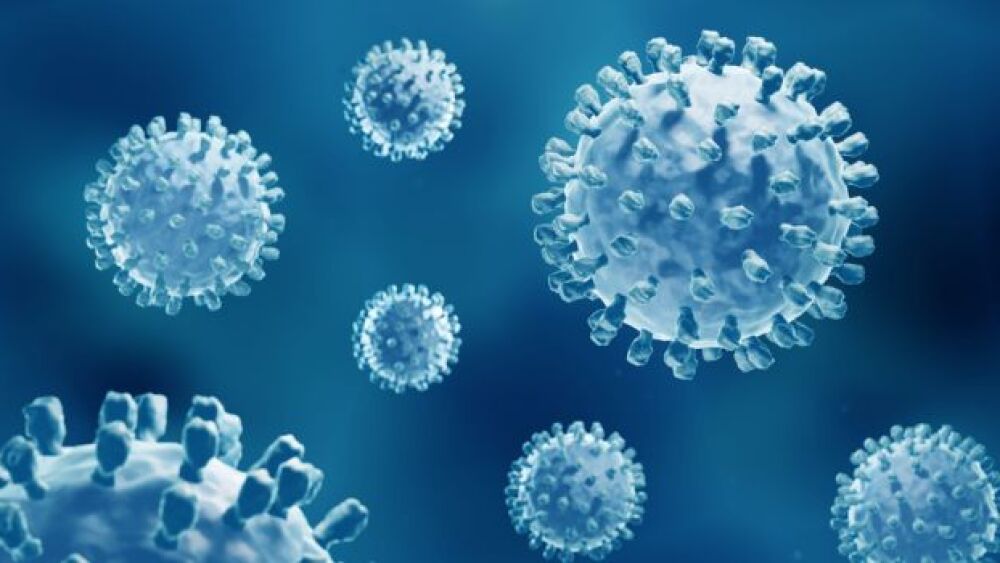research could assist in developing stem cell therapy for heart repair
Frederick, MD: Syngene, a world-leading manufacturer of image analysis solutions is delighted to announce that the G:BOX Chemi XRQ high resolution, multi-application image analysis system is being successfully used at the Lithuanian University of Health Sciences Academy of Medicine to study molecular mechanisms of cardiac stem cell function which could help in developing stem cell therapies for heart repair.
Researchers in the Laboratory of Cell Culture at the Lithuanian University of Health Sciences Academy of Medicine are utilizing the easy-to-use G:BOX Chemi XRQ system to image and analyze proteins on chemiluminescent Western blots and DNA gels stained with SYBR® Safe dyes. The image analysis data is being used to investigate the effects that genetic modification have on how stem cells differentiate into cardiac myocytes and integrate into cardiac tissue. Scientists at the Laboratory of Cell Culture believe results from this research could provide clues that help in utilizing stem cell therapy for heart repair.
Dr Ieva Antanaviciute, a Research Scientist at the Laboratory of Cell Culture in the Lithuanian University of Health Sciences Academy of Medicine stated: “Our Lab is focused on gap junction-mediated intercellular communication. We study expression of gap junction proteins (connexins) under different environmental conditions in model cell lines (HeLa) also skeletal myoblast. To analyze our results we need an imager that can perform well with DNA gels as well as, chemiluminescent Western blots.”
Ieva continued: “We reviewed a range of imaging systems because we wanted to get the best value for our money. The price and service are what attracted us to the G:BOX Chemi XRQ as the system generated good publication quality images and we have the opportunity to upgrade with different filters. This is excellent for our lab as in the future we may want to analyze florescent Western blots. ”
Scientists wanting to find out more about the G:BOX XRQ, can click the link for details: http://www.syngene.com/g-box-chemi-xrq/
“We are pleased that scientists at the Lithuanian University of Health Sciences Academy of Medicine are successfully using Syngene’s next generation image analysis technology,” explains Rob Van den Broek, European Sales Manager at Syngene, “their use of the G:BOX Chemi XRQ shows that the system is an excellent multi-purpose imaging workstation. Scientists demanding an affordable, yet accurate method of generating high quality results should contact us at Syngene to see how well a G:BOX Chemi XRQ system can perform chemiluminescent Western blot and 1D gel imaging in their laboratories.”
For Further Information Contact:
Dr Ieva Antanaviciute, Laboratory of Cell Culture, Institute of Cardiology, Lithuanian University of Health Sciences Academy of Medicine, Sukileliu Avenue, LT-50009, Kaunas, Lithuania.
Tel.: +8-37-302880, mob. +37068013673,
Email: Ieva.Antanaviciute@lsmuni.lt Web: www.kmu.lt/cellculture
Editor Contact:
Dr Sue Pearson, Director, International Science Writer, PO Box 170, Hitchin, Hertfordshire SG5 3GD, UK.
Tel/Fax +44 (0) 1462- 635327 Email: sue.pearson@internationalsciencewriter.com
Web: www.internationalsciencewriter.com Twitter: @IScienceWriter
About Syngene
Syngene is a world-leading supplier of integrated imaging solutions for analysis and documentation of gel-based information. Syngene’s systems are used by more than 10,000 research organizations and over 75,000 individual scientists world-wide and include many of the world’s top pharmaceutical companies and major research institutes.
Syngene, founded in 1997, is a division of the Synoptics Group of the AIM quoted Scientific Digital Imaging Company based in Cambridge, UK. The Group’s other divisions, Syncroscopy and Synbiosis, specialize in digital imaging solutions for microscopy and microbial applications respectively. Synoptics, which is celebrating its 30th anniversary of being in business in 2015, currently employs 40 people in its UK and subsidiary operation in Frederick, USA.
About the Laboratory of Cell Culture
The Laboratory of Cell Culture at the Lithuanian University of Health Sciences Academy of Medicine investigates stem cell myogenic characteristics, their viability and ability to differentiate into the cardiac myocytes and integrate into the cardiac tissue. Genetic modifications are being performed to improve viability and intercellular communication in the tissue.
The technical facilities of the laboratory enable it to perform collaborative research projects with other laboratories globally working in the related scientific fields, such as regenerative medicine.
Help employers find you! Check out all the jobs and post your resume.
Frederick, MD: Syngene, a world-leading manufacturer of image analysis solutions is delighted to announce that the G:BOX Chemi XRQ high resolution, multi-application image analysis system is being successfully used at the Lithuanian University of Health Sciences Academy of Medicine to study molecular mechanisms of cardiac stem cell function which could help in developing stem cell therapies for heart repair.
Researchers in the Laboratory of Cell Culture at the Lithuanian University of Health Sciences Academy of Medicine are utilizing the easy-to-use G:BOX Chemi XRQ system to image and analyze proteins on chemiluminescent Western blots and DNA gels stained with SYBR® Safe dyes. The image analysis data is being used to investigate the effects that genetic modification have on how stem cells differentiate into cardiac myocytes and integrate into cardiac tissue. Scientists at the Laboratory of Cell Culture believe results from this research could provide clues that help in utilizing stem cell therapy for heart repair.
Dr Ieva Antanaviciute, a Research Scientist at the Laboratory of Cell Culture in the Lithuanian University of Health Sciences Academy of Medicine stated: “Our Lab is focused on gap junction-mediated intercellular communication. We study expression of gap junction proteins (connexins) under different environmental conditions in model cell lines (HeLa) also skeletal myoblast. To analyze our results we need an imager that can perform well with DNA gels as well as, chemiluminescent Western blots.”
Ieva continued: “We reviewed a range of imaging systems because we wanted to get the best value for our money. The price and service are what attracted us to the G:BOX Chemi XRQ as the system generated good publication quality images and we have the opportunity to upgrade with different filters. This is excellent for our lab as in the future we may want to analyze florescent Western blots. ”
Scientists wanting to find out more about the G:BOX XRQ, can click the link for details: http://www.syngene.com/g-box-chemi-xrq/
“We are pleased that scientists at the Lithuanian University of Health Sciences Academy of Medicine are successfully using Syngene’s next generation image analysis technology,” explains Rob Van den Broek, European Sales Manager at Syngene, “their use of the G:BOX Chemi XRQ shows that the system is an excellent multi-purpose imaging workstation. Scientists demanding an affordable, yet accurate method of generating high quality results should contact us at Syngene to see how well a G:BOX Chemi XRQ system can perform chemiluminescent Western blot and 1D gel imaging in their laboratories.”
For Further Information Contact:
Dr Ieva Antanaviciute, Laboratory of Cell Culture, Institute of Cardiology, Lithuanian University of Health Sciences Academy of Medicine, Sukileliu Avenue, LT-50009, Kaunas, Lithuania.
Tel.: +8-37-302880, mob. +37068013673,
Email: Ieva.Antanaviciute@lsmuni.lt Web: www.kmu.lt/cellculture
Editor Contact:
Dr Sue Pearson, Director, International Science Writer, PO Box 170, Hitchin, Hertfordshire SG5 3GD, UK.
Tel/Fax +44 (0) 1462- 635327 Email: sue.pearson@internationalsciencewriter.com
Web: www.internationalsciencewriter.com Twitter: @IScienceWriter
About Syngene
Syngene is a world-leading supplier of integrated imaging solutions for analysis and documentation of gel-based information. Syngene’s systems are used by more than 10,000 research organizations and over 75,000 individual scientists world-wide and include many of the world’s top pharmaceutical companies and major research institutes.
Syngene, founded in 1997, is a division of the Synoptics Group of the AIM quoted Scientific Digital Imaging Company based in Cambridge, UK. The Group’s other divisions, Syncroscopy and Synbiosis, specialize in digital imaging solutions for microscopy and microbial applications respectively. Synoptics, which is celebrating its 30th anniversary of being in business in 2015, currently employs 40 people in its UK and subsidiary operation in Frederick, USA.
About the Laboratory of Cell Culture
The Laboratory of Cell Culture at the Lithuanian University of Health Sciences Academy of Medicine investigates stem cell myogenic characteristics, their viability and ability to differentiate into the cardiac myocytes and integrate into the cardiac tissue. Genetic modifications are being performed to improve viability and intercellular communication in the tissue.
The technical facilities of the laboratory enable it to perform collaborative research projects with other laboratories globally working in the related scientific fields, such as regenerative medicine.
Help employers find you! Check out all the jobs and post your resume.




